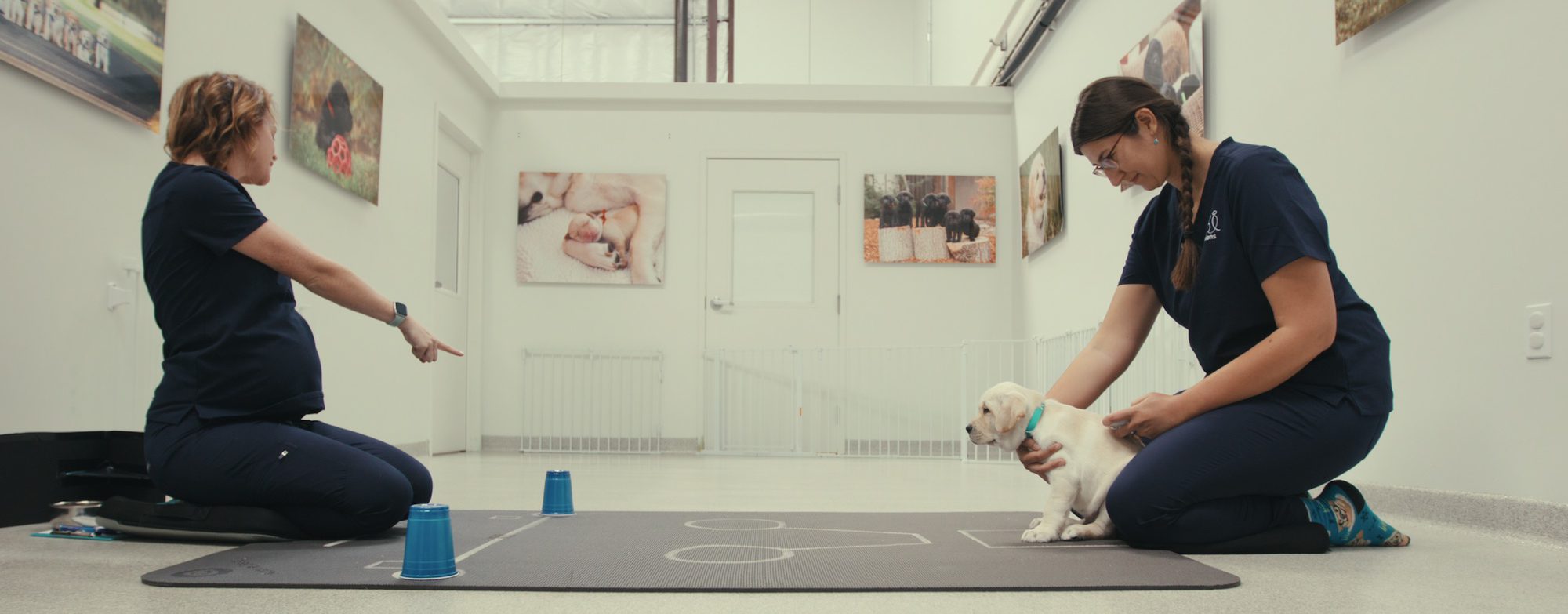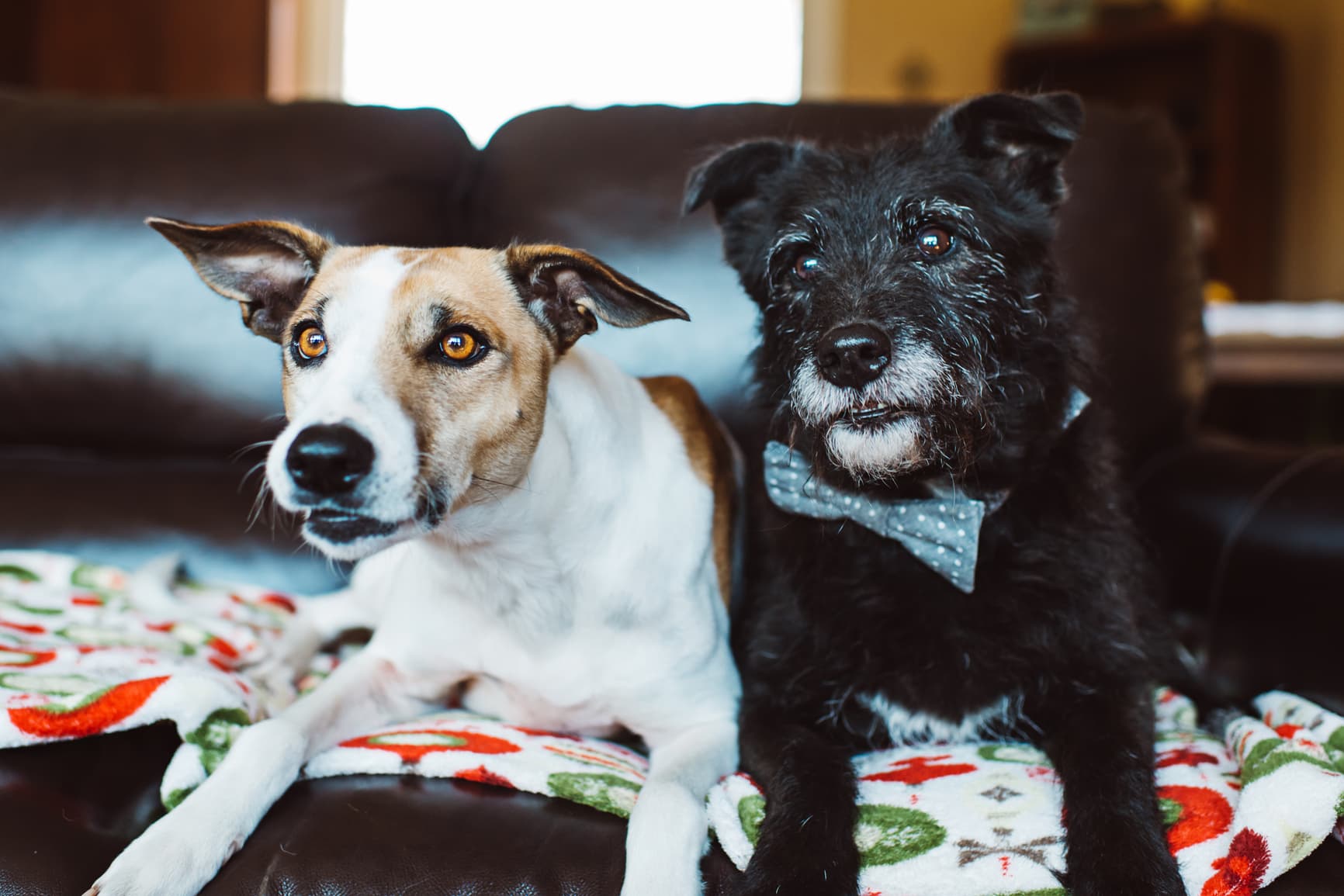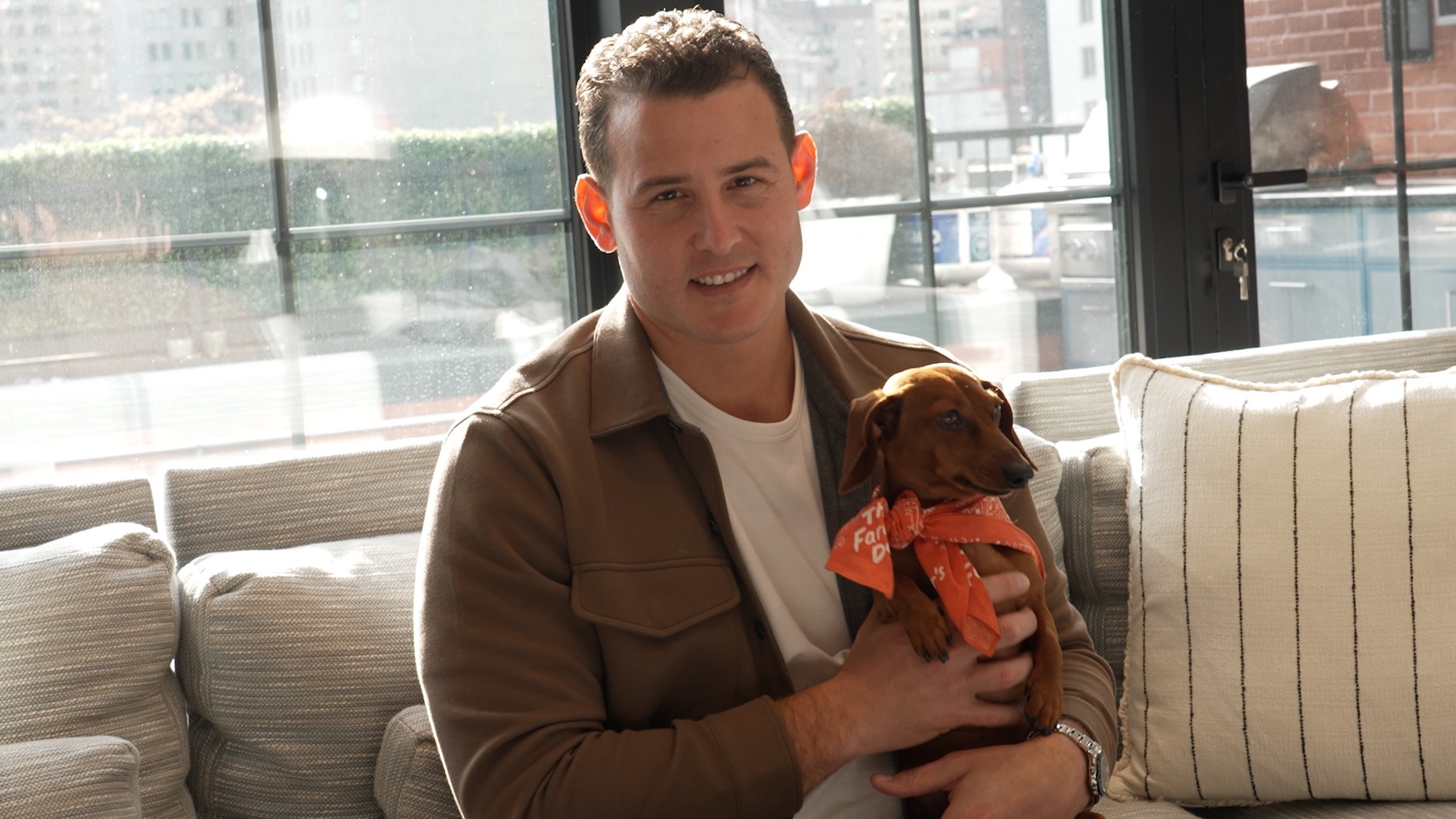
Andy Mitchell had a hit for Netflix in 2022 with Inside the Mind of a Cat, and enjoyed exploring the inner lives of the film’s feline subjects. But, inside his own mind, the director was already thinking about his followup. “I love cats. I’ve had cats. I think cats are great,” he says. “But I’m sort of a dog person, so the whole time we were doing the cat movie, we were thinking, ‘Wouldn’t it be great if we could do this with dogs?’”
Mitchell has spent much of his career capturing animals on film, working on projects like Secrets of the Whales and American Serengeti for National Geographic, and wanted to focus specifically on the bond between humans and dogs.
Thanks in part to the success of his first Netflix documentary, that wish came true. Mitchell’s Rob Lowe–narrated followup, Inside the Mind of a Dog, sets out to give audiences a glimpse into dog cognition with insights from academics who study them. He even got to work his own dogs into the project. “Like a proud parent,” he says, he may have given his golden retriever, Boone, and pit bull–Lab mix, Nola, “too much screen time.”
On August 10, the day after the movie starts streaming on Netflix, Mitchell will try to break the Guinness World Record for most dogs attending a film screening (this is something Guinness keeps track of, and a screening of the Paw Patrol movie holds the top honors for now). The attempt is scheduled for the Memorial Sports Center in Middlebury, Vermont. It should be a fitting finale to what Mitchell has found to be an unusually rewarding project.
“I basically spent a year of my life just playing with dogs and learning about dogs,” says Mitchell. “It was kind of a dream project.”
Inside the Mind of a Dog will stream on Netflix beginning on August 9.

Digest: How did you approach your research for a topic as big as dog cognition
Andy Mitchell: There’s a burgeoning dog-science community. Once we dove in, we realized there was a lot of new work being done, and [the scientists] are all sort of related. Like, “this person studied under this person.” We found a guy out of Duke, Dr. Brian Hare, who started the Duke Canine Cognition Center. One of Dr. Hare’s main themes is “survival of the friendliest,” which I love. So [that’s] an underlying theme of our whole movie. The dog evolved to be possibly the second-most-successful mammal ever because it was so friendly to early humans. So it gets into that origin story, which I really like. I think it’s a lot of fun.
As a topic, dog cognition involves a lot of abstractions. What was most challenging for you to capture on film?
It’s hard to show science sometimes. So we try to do it in a sense of telling a story. We followed young, 18-month-old, newly adult dogs from when they entered service-dog school until they were matched with their person. We ended up focusing on three. Spoiler alert, two of them didn’t actually pass. But one did match with this amazing young woman. So we got to be there for the actual match—and we hung around a lot on this deeply compelling, we hope moving, story. And we then found opportunities along the way to dive into things like senses and history. For example, they do field trips with the dog trainees. And one of the field trips is out on Long Island, to an amusement park called Adventureland.
They bring these dogs to Adventureland, because they have to be unflappable. And where better to flap a dog than Adventureland? So, through that, we talked about senses—like hearing. All the stuff they’re hearing [when they’re around the rides and the crowds]. And then we get into the science. And they bring a dog to a supermarket—so we use the supermarket to tell the story of smell [with all of the foods around]. So we’re finding organic ways to [convey] science facts through the story.

You talked to Dr. Federico Rossano, who’s famous for his work with dogs who seem to “talk” by hitting buttons. Anyone with an internet connection and an interest in dogs may have seen the videos of dogs hitting those buttons. Do you personally think what they’re doing is “talking?”
He has a few papers coming out, and apparently has some very strong findings. We’re not really making any judgments about what’s going on. We’re just presenting what we saw, and people can judge for themselves. But It’s fun. I saw the dog pushing buttons. Was the dog just trained to push those buttons? I don’t know. But I like the question. Dogs are smart. I can talk to my dogs with my face. I can literally just make facial expressions, and they’ll know exactly what I mean. “It’s time to go outside,” or “I get a cookie” or whatever else it is.
Is there something that you think people get wrong about dogs’ minds?
A recurring theme we kept running into was “Let your dog make some decisions for themselves.” When you go on a walk, let the dog decide if you go right or left. This idea of letting your dog have some level of freedom and some level of autonomy. Even if you live in a city and he has to be on a leash, let him decide every now and then what you’re going to do. That comes back again and again and again. You’re going to have happier dog if you let them make some decisions for themselves. I think that’s a good piece of advice.
You’ve spent a lot of time filming wild animals. What is different about capturing a dog who lives with people?
It gives you a lot more flexibility to get shots that you wish you could get with a lion. We worked with some awesome, well-trained frisbee dogs. We got our high-speed wildlife cameras out and spent a few weekends with the dogs flying through the air, jumping into the pool, having an awesome time—jumping into piles of leaves. There’s a lot of that stuff in there, and then we went into, “Why do they chase frisbees?” I like being able to connect things like that. So we get to see the awesome frisbee shots, and then we actually get into the instinct and behavior that makes them so good at what they’re doing— what’s going on in the brain that’s allowing them to be so amazing at skills like that.

Overall, what do you want people to get out of this movie?
Well, I want them to enjoy a good story, first of all. And be willing to look at their dogs in a different light. Be willing to give their dogs a choice every now and then. These dogs, they’re our best friends, and they love us unconditionally—so be nice to dogs. It’s that simple, you know?
Header image: Courtesy of Netflix, © 2024




